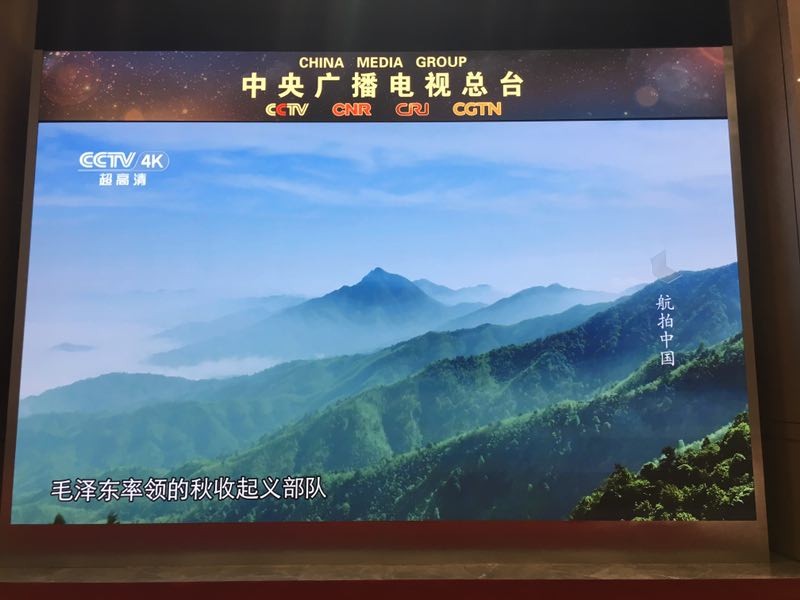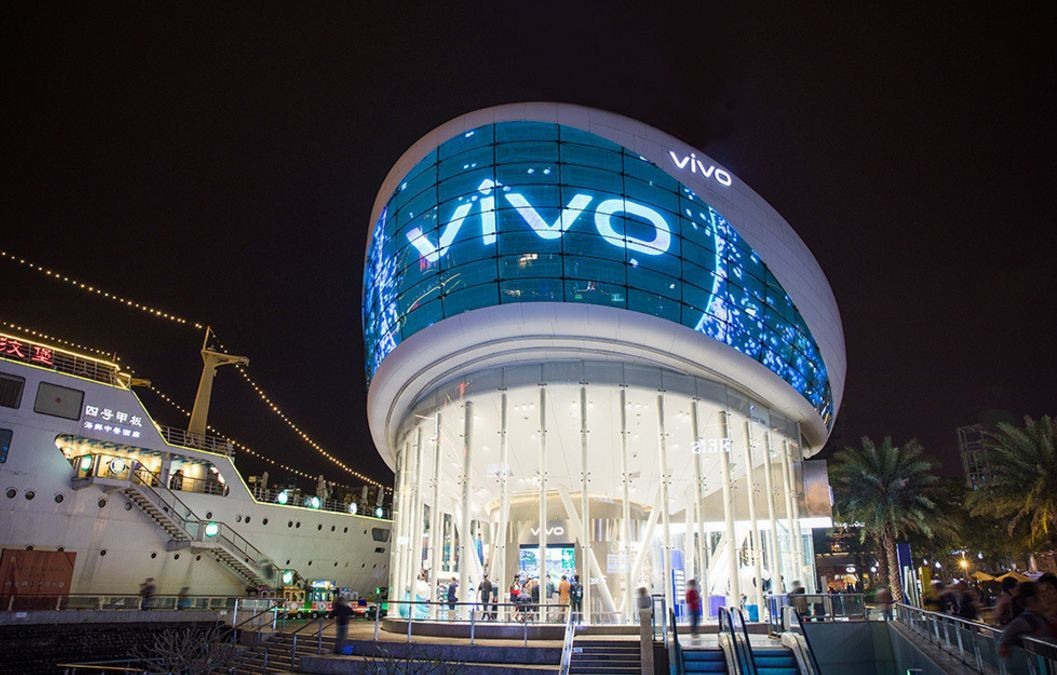1: What is an LED?
LED is the English abbreviation of Light Emitting Diode (Lightemittingdiode), the "LED" in the display industry, especially the LED that emits visible light;
2: What is a pixel?
The minimum illuminating pixel of the LED display has the same meaning as the "pixel" in the ordinary computer display;
3: What is the pixel distance (point spacing)?
The distance from the center of one pixel to the center of another pixel;
4: What is the LED display module?
A small unit consisting of several display pixels that are structurally independent and can form an LED display. Typically, there are "8 x 8", "5 x 7", "5 x 8", etc., which can be assembled into modules by specific circuits and structures;
5: What is DIP?
DIP is the abbreviation of DoubleIn-linePackage, dual in-line assembly;
6: What is SMT? What is SMD? SMT is the surface assembly technology (short for SurfaceMountedTechnology), which is currently the most popular technology and process in the electronics assembly industry; SMD is a surface-mounting device (short for Surface mounteddevice);
7: What is the LED display module?
a basic unit defined by a circuit and an installation structure, having a display function and capable of realizing a display function by simple assembly;
8: What is the LED display?
a display screen composed of an array of LED devices by a certain control method;
9: What is a plug-in module? What are the advantages and disadvantages?
It means that the lamp of the DIP package passes the lamp pin through the PCB board, and the tin is filled in the lamp hole by soldering. The module made by this process is the plug-in module; the advantage is that the viewing angle is large, the brightness is high, and the heat dissipation is good. The disadvantage is that the pixel density is small;
10: What is a surface mount module? What are the advantages and disadvantages?
The surface mount is also called SMT. The SMT packaged lamp is soldered to the surface of the PCB through a soldering process. The lamp pins do not need to pass through the PCB. The module made by this process is called a surface mount module. The advantage is that the viewing angle is large. The display image is soft, the pixel density is large, and it is suitable for indoor viewing; the disadvantage is that the brightness is not high enough, and the heat dissipation of the lamp itself is not good enough;
11: What is the sub-surface module? What are the advantages and disadvantages?
Sub-surface label is a product between DIP and SMT. Its LED lamp has the same package surface as SMT, but its positive and negative pins are the same as DIP, and it is also soldered through PCB. The advantages are: high brightness, good display effect, disadvantages: complicated process and difficult maintenance;
12: What is 3 in 1? What are its advantages and disadvantages?
It refers to packaging three different color LED chips of R, G and B in the same glue body; the advantages are: simple production, good display effect, disadvantages: light separation and color separation are difficult, and cost is high;
13: What is 3 and 1? What are its advantages and disadvantages?
3 and 1 are the first innovations and use of our company in the industry. It means that the three independent SMT lamps of R, G and B are vertically juxtaposed at a certain interval, so that not only each of the 3 in 1 Advantages, can also solve the various shortcomings of 3-in-1;
14: What is the double primary color, pseudo color, full color display?
Different color LEDs can be used to form different display screens. The two primary colors are composed of red, green or yellow and green. The pseudo color is composed of three different colors: red, yellow green and blue. The full color is red. , pure green, pure blue composed of three different colors;
15: What is the brightness of the light?
The intensity of light emitted by the unit area of ??the LED display, in cd/m2, is simply the intensity of light emitted by a display of one square meter;
16: What is the brightness level?
The number of levels of manual or automatic adjustment of the brightness of the entire screen between the lowest and highest brightness;
17: What is gray level?
The number of technical processing stages between the darkest and the brightest at the same brightness level;
18: What is the maximum brightness?
Under certain ambient illumination, the primary color of the LED display is at the maximum brightness and maximum gray level;
19: What is a PCB?
PCB is a printed circuit board (short for PrintedCircuitBoard);
20: What is a BOM?
BOM is a bill of materials (abbreviation of Billofmaterial);
21: What is white balance? What is white balance adjustment?
The white balance we are talking about refers to the balance of white, that is, the balance of the brightness of the three colors of R, G, and B: 3:6:1; the ratio of the brightness of the three colors of R, G, and B, and the adjustment of the white coordinates. Called white balance adjustment;
22: What is contrast?
The ratio of the maximum brightness of the LED display to the background brightness under a certain ambient illumination;
23: What is the color temperature?
When the color of the light emitted by the light source is the same as the color of the black body at a certain temperature, the temperature of the black body is called the color temperature of the light source.
24: What is the frame change frequency?
The number of times the display screen information is updated in a unit time;
25: What is the refresh rate?
The number of times the display screen is repeatedly displayed by the display;
26: What is the perspective? What is the angle of view? What is the best perspective?
The viewing angle is the angle between the two viewing directions of the same plane and the normal direction when the brightness of the viewing direction drops to 1/2 of the brightness of the normal direction of the LED display screen. Divided into horizontal and vertical viewing angles; the viewing angle is just the direction of the image content on the display, and the angle formed by the normal of the display; the best viewing angle is just enough to completely see the content on the display, and No color cast, the sharpest direction of the image content and the angle formed by the normal;
27: What is the best line of sight?
Is just enough to completely see the content on the display, and does not color cast, the sharpest position of the image content relative to the vertical distance of the screen;

8: What is the point of loss? How many?
Pixels whose illumination state does not match the control requirements; the out-of-control points are divided into: blind spot (also known as dead point), constant bright point (or dark point), and flash point;
29: What is a static driver? What is a scan driver? What is the difference between the two?
The "point-to-point" control from the output pin of the driver IC to the pixel is called static drive; the control of "point-to-column" from the output pin of the driver IC to the pixel is called scan drive, which requires a row control circuit; It can be clearly seen from the driver board: the static drive does not require a row control circuit, and the cost is high, but the display effect is good, the stability is good, the brightness loss is small, etc.; the scan drive requires a row control circuit, but the cost is low. Poor display effect, poor stability, large loss of brightness, etc.;
30: What is constant current drive? What is a constant voltage drive?
Constant current refers to the current value specified in the constant output design in the working environment allowed by the driver IC; constant voltage refers to the voltage value specified in the constant output design within the working environment allowed by the driver IC;
31: What is nonlinear correction?
If the digital signal output from the computer is not corrected, the color distortion will appear on the LED display. Therefore, in the system control circuit, the signal output by the original computer is calculated by a non-linear function. Since the front and back signals are nonlinear, we often call it nonlinear correction;
32: What is the rated working voltage? What is the working voltage? What is the supply voltage?
The rated working voltage refers to the voltage when the appliance is working normally; the working voltage refers to the voltage value of the appliance under the rated voltage range and normal operation; the supply voltage is divided into AC and DC supply voltage, and our display AC supply voltage is AC220V~240V, DC power supply voltage is 5V;
33: What is color distortion?
Refers to the same object in nature and on the display, the difference between the two for the human eye's sensory vision;
34: What is a synchronous system and what is an asynchronous system?
Synchronous and asynchronous are relative to the computer. The so-called synchronous system refers to the LED display control system that displays the content displayed on the display and the computer display. The asynchronous system means that the computer-edited display data is stored in advance. In the display control system, after the computer is turned off, it will not affect the normal display of the LED display. Such a control system is an asynchronous system;
35: What is blind spot detection technology?
Through the host computer software and the underlying hardware, the blind spot (LED open circuit and short circuit) on the display screen can be detected, and a report is generated to tell the LED screen body manager that such a technology is called blind spot detection technology;
36: What is power detection?
Through the upper computer software and the underlying hardware, the working condition of each power supply on the display screen can be detected, and a report is generated to tell the LED screen body manager that such a technology is called a power supply detection technology;
37: What is brightness detection? What is brightness adjustment?
The brightness in the brightness detection refers to the ambient brightness of the LED display screen. The ambient brightness of the display screen is detected by the light sensor. This detection method is called brightness detection; the brightness mentioned in the brightness adjustment refers to the LED display. The brightness of the emitted light, the detected data is fed back to the LED display control system or the control computer, and then the brightness of the display screen is adjusted according to the data, called brightness adjustment;
38: What is a real pixel? What is a virtual pixel? How many virtual pixels are there? What is pixel sharing?
Real pixel means that the number of physical pixels on the display screen is 1:1 compared with the actual number of displayed pixels. How many points actually appear on the display screen can only display image information of how many points; virtual pixels refer to physical pixels on the display screen. The number of points and the actual displayed pixel points are 1:N (N=2, 4), which can display 2 times or 4 times more pixels than the actual pixels of the display; virtual pixels can be divided into virtual control modes. : Software virtual and hardware virtual; according to the multiple relationship: 2 times virtual and 4 times virtual, according to the lighting mode on a module is divided into: 1R1G1B virtual and 2R1G1GB virtual;
39: What is remote control? Under what circumstances?
The so-called remote is not necessarily a long distance. The remote control includes the main control terminal and the controlled terminal in a local area network, and the spatial distance is not far; and the main control terminal and the controlled terminal are within a relatively distant spatial distance; the customer requests or directly exceeds the optical fiber according to the customer control position. Control the distance, then use remote control;
40: What is fiber transmission? What is network cable transmission?
Optical fiber transmission is to convert electrical signals into optical signals by transparent glass fiber transmission; network cable transmission is to use metal wires to directly transmit electrical signals;
41: Under what circumstances use the network cable? When do you use fiber?
When the distance between the display screen and the control computer is less than 100M, it is transmitted by the network cable; when the distance between the two is less than 500M and greater than 100M, the multimode fiber is used, and when the distance is greater than 500M, the single mode fiber is used;
42: What is LAN control? What is internet control?
In the LAN, another computer is connected to an external device connected to it through a computer. This control method is called LAN control; the main controller achieves the control purpose by accessing the IP address of the controller in the Interner network. Called Internet control;
43: What is DVI? What is VGA?
DVI is the abbreviation of DigitalVideoInterface, which is the digital video interface. It is a digital video signal interface that is now widely used internationally; the full name of VGA in English is VideoGraphicArray, which is a display drawing array. It is a video signal interface of three analog outputs of R, G and B;

44: What is a digital signal? What is a digital circuit?
The digital signal means that the value of the signal amplitude is discrete, and the amplitude representation is limited to two finite values ??of 0 and 1. The circuit for processing and controlling such a signal is called a digital circuit;
45: What is an analog signal? What is an analog circuit?
Analog signals mean that the amplitude of the signal is continuous over time; the circuit that processes and controls such signals is called an analog circuit;
46: What is a PCI slot?
The PCI slot is an expansion slot based on the PCI local bus (Pedpherd Component Interconnect). The PCI slot is the main expansion slot of the motherboard. By plugging in different expansion cards, almost all external functions that can be realized by the current computer can be obtained. ;
47: What is the AGP slot?
Accelerated Graphics Interface. AGP is an interface specification that allows 3D graphics to be displayed at a faster rate on a regular PC. AGP is an interface designed to transfer 3D graphics faster and more smoothly. It uses the main memory of a normal PC to refresh the image displayed on the display, and supports 3D graphics technology such as texture mapping, zero buffering and alpha blending.
48: What is GPRS? What is GSM? What is CDMA?
GPRS is a general packet radio service (General Packet Radio Service), which is a new bearer service developed on the existing GSM system, mainly used for radio communication; GSM is the "Global System For Mobile Communication" standard launched by the European Committee for Standardization in 1992 (Global Mobile) Abbreviation for communication system, which uses digital communication technology and unified network standards to ensure communication quality and develop more new services for users to use. CodeDivisionMultipleAccess, a new and mature wireless communication technology based on spread spectrum technology;
49: Where is the use of GPRS technology for the display?
In the GPRS data network based on mobile communication, the data of our LED display screen is communicated through the GPRS transceiver module for data communication, which can realize remote point-to-point small data transmission in remote locations! Achieve the purpose of remote control;
50: What is RS-232 communication, what is RS-485 communication, and what is RS-422 communication? What are the benefits?


